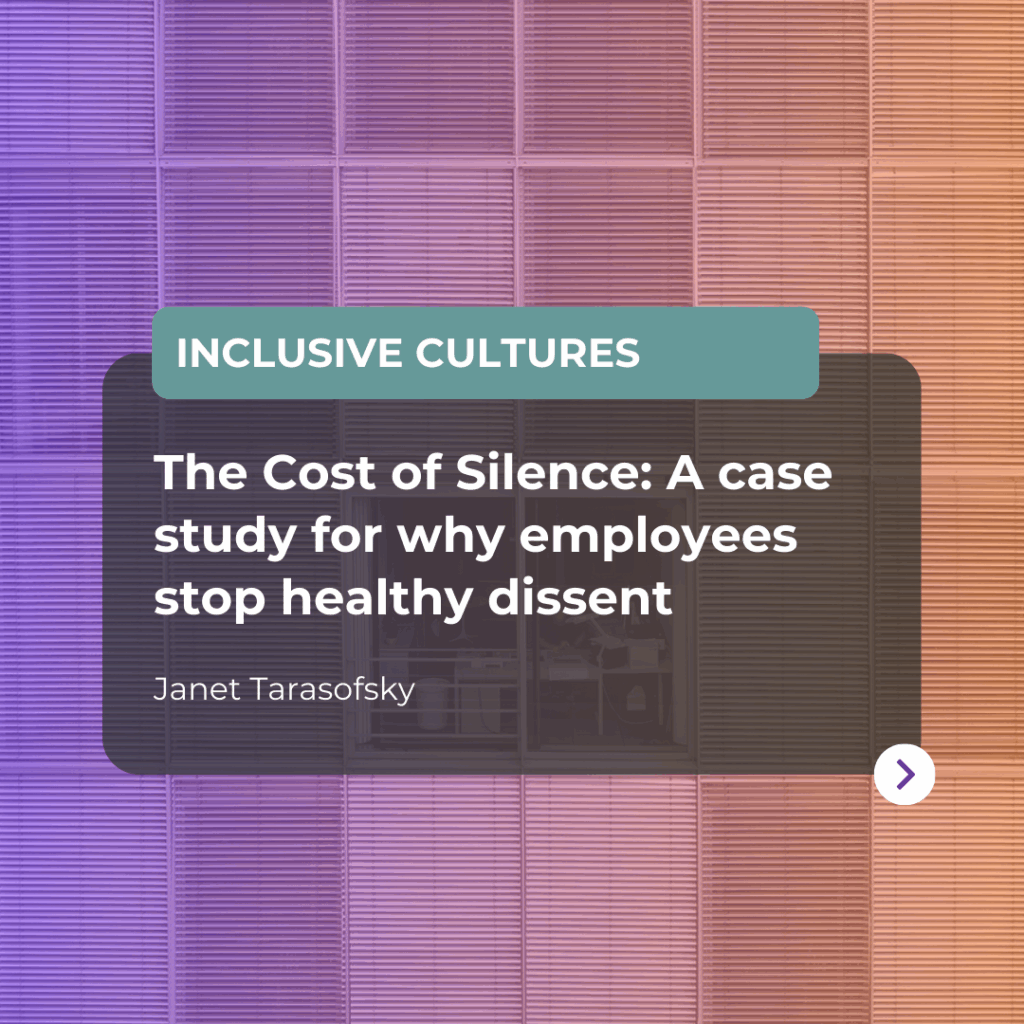In the quest for workplace equity and inclusion, diversity, equity, and inclusion (DEI) initiatives have become vital. However, DEI strategies can fall short of success by failing to address the complex, overlapping nature of individual identities. Enter intersectionality—a framework essential for crafting more effective and comprehensive DEI strategies. By recognising the complex interplay of various social categories such as race, gender, disability, and sexual orientation, organisations can better address the unique challenges faced by their employees.
Understanding Intersectionality
The term “intersectionality” was coined by legal scholar Kimberlé Crenshaw in 1989 to illustrate how systems of oppression overlap, compounding the disadvantages faced by individuals with multiple marginalised identities (Crenshaw, 1989). For instance, the experiences of a Black woman in the workplace may differ significantly from those of either a Black man or a white woman, as she navigates both racism and sexism simultaneously.
Intersectionality emphasises that these social categories are not experienced in isolation but interact dynamically, shaping individuals’ lived experiences in nuanced ways. Acknowledging this complexity allows organisations to avoid a one-size-fits-all approach to inclusion and instead foster an environment that recognises and respects the diverse identities within their workforce.
The Role of Intersectionality in DEI Initiatives
DEI initiatives aim to dismantle barriers to inclusion, but without an intersectional lens, they risk oversimplifying issues and failing to address the realities of diverse employees. Traditional single-issue approaches to DEI often focus on broad categories like gender or ethnicity without considering how these identities intersect.
For example, an initiative designed to support women may unintentionally exclude women of colour or women with disabilities, as their unique challenges differ from those of able-bodied, white women. An intersectional approach ensures that DEI initiatives account for the complexity of human identities, addressing overlapping forms of discrimination and creating equitable opportunities for all employees.
Research supports the efficacy of intersectional approaches. A study by the British Psychological Society (2020) found that organisations employing intersectional strategies reported higher levels of employee satisfaction and engagement. This is because employees felt their unique identities were acknowledged and valued, rather than subsumed into generic categories.
Implementing Intersectionality in Your DEI Strategy
To incorporate intersectionality into DEI strategies, organisations must adopt deliberate and informed practices:
- Conducting Intersectional Audits: An intersectional audit is a critical first step in identifying DEI gaps within an organisation. This involves collecting data across multiple dimensions of diversity, such as gender, race, disability, and socio-economic status, and analysing how these dimensions intersect to affect employee experiences.Organisations can use surveys, focus groups, and anonymised employee feedback to gather insights. Regularly updating and reviewing this data ensures that strategies remain relevant and effective. Transparency in findings, combined with a commitment to actionable change, fosters trust and accountability.
- Revising Recruitment and Hiring Practices: Recruitment strategies must account for the unique challenges faced by individuals with intersecting identities. For instance, women of colour may face biases at multiple levels, from resume screening to interviews. Diverse interview panels and structured evaluations can help mitigate these biases.Additionally, adopting holistic candidate evaluations that go beyond traditional qualifications can ensure opportunities for individuals whose unique backgrounds may bring diverse perspectives to the organisation. As highlighted by Forbes (Smith, 2021), inclusive hiring practices not only broaden the talent pool but also enhance organisational creativity and innovation.
- Developing Inclusive Policies and Practices: Policies that reflect an intersectional understanding of employee needs are key. For example, a workplace may offer parental leave policies inclusive of LGBTQ+ families or mental health resources tailored to employees who face intersecting forms of stress and discrimination.
- Providing Intersectionality Training and Education: Educating leadership and staff about intersectionality is essential for fostering an inclusive culture. Training programmes can help employees understand how intersecting identities shape experiences and equip managers to address these complexities with empathy and fairness.
Benefits of an Intersectional DEI Strategy
The advantages of adopting an intersectional DEI strategy are manifold. Research by McKinsey & Company (2021) highlights that organisations with inclusive cultures see improved employee retention and engagement. When employees feel that their unique identities are valued, they are more likely to stay committed to the organisation.
Intersectionality also drives innovation. A diverse workforce brings varied perspectives, which enhances problem-solving and creativity. Moreover, an inclusive workplace fosters organisational resilience by equipping teams to adapt to changing dynamics effectively.
Perhaps most importantly, an intersectional approach promotes a workplace culture rooted in equity and fairness, reinforcing an organisation’s commitment to its values.
Measuring the Impact of Intersectionality in DEI
Measuring the success of intersectional DEI initiatives requires robust metrics. Key performance indicators (KPIs) such as employee satisfaction scores, diversity representation at various levels, and retention rates provide valuable insights.
Regular assessments, coupled with transparent reporting, ensure accountability. Organisations should also prioritise qualitative feedback to capture the nuanced experiences of employees whose identities intersect. For example, conducting interviews or focus groups can provide deeper insights into the lived realities of staff members.
Several organisations have successfully integrated intersectionality into their DEI strategies. For instance, global consulting firm Deloitte has implemented initiatives aimed at supporting employees with intersecting identities, such as women of colour in leadership positions. Their approach includes mentorship programmes, targeted training, and policy reforms, resulting in a measurable increase in diversity at senior levels (Deloitte, 2022).
Similarly, Unilever has introduced intersectionality-focused training to educate managers about the complexities of identity. This has enhanced workplace inclusivity, leading to higher employee satisfaction and improved team performance.
Overcoming Challenges in Implementing Intersectionality
Implementing intersectionality is not without challenges. Resistance to change, particularly from leadership or established systems, can hinder progress. Addressing this requires clear communication about the benefits of intersectional DEI and securing buy-in from all levels of the organisation.
Ensuring consistent application across the organisation is another challenge. Organisations must embed intersectionality into every aspect of their operations, from recruitment to leadership development, to achieve meaningful outcomes.
Balancing intersectional needs with organisational goals requires thoughtful planning. By aligning DEI initiatives with business objectives, organisations can demonstrate that inclusivity is not just a moral imperative but also a driver of success. Intersectionality is not merely a buzzword but a transformative framework that can elevate DEI strategies to new heights. By recognising the interconnected nature of identities, organisations can create truly inclusive environments that support all employees.
As businesses strive for equity, adopting intersectionality in your DEI strategy is not just a ‘nice to have’—it is a necessity. By conducting intersectional audits, revising hiring practices, and measuring progress, organisations can harness the full potential of their workforce, fostering innovation, resilience, and a culture of belonging.
Adopting an intersectional DEI strategy is a step toward a more equitable future, where diversity is celebrated, and every employee has the opportunity to thrive. Want to find out how you can do this in your organisation? Contact us today for a free consultation with one of our expert business psychologists.
Next steps
At Pearn Kandola we offer a breadth of services to support your organisation’s DEI efforts:
- DEI Audits and Reviews: Our psychologists use a mixture of quantitative and qualitative methods that go beyond ticking boxes to drive meaningful change that will transform your workplaces
- DEI Strategy: We can help you build a truly intersectional DEI strategy with set milestones to keep you on track for a workplace that fosters real-behaviour change.
- Inclusive Teams training: We help you harness differences and build a team that understands the importance of inclusion, and recognise their own strengths and risk areas with personalised actions on how to be more inclusive.
For more advice on our services and how we can help, please get in touch via info@pearnkandola.com.
References:
British Psychological Society. (2020). Intersectionality in the workplace: Improving employee satisfaction and engagement. British Psychological Society.
Crenshaw, K. (1989). Demarginalizing the intersection of race and sex: A Black feminist critique of antidiscrimination doctrine, feminist theory, and antiracist politics. University of Chicago Legal Forum, 1989(1), 139–167.
Deloitte. (2022). Diversity and inclusion report: Empowering employees with intersecting identities.
Hunt, V., Prince, S., Dixon-Fyle, S., & Yee, L. (2020). Diversity wins: How inclusion matters. McKinsey & Company.
Smith, J. (2021, March 15). Inclusive hiring practices drive innovation and creativity in the workplace. Forbes.
Unilever. (2022). Building inclusive teams through intersectionality-focused training.






